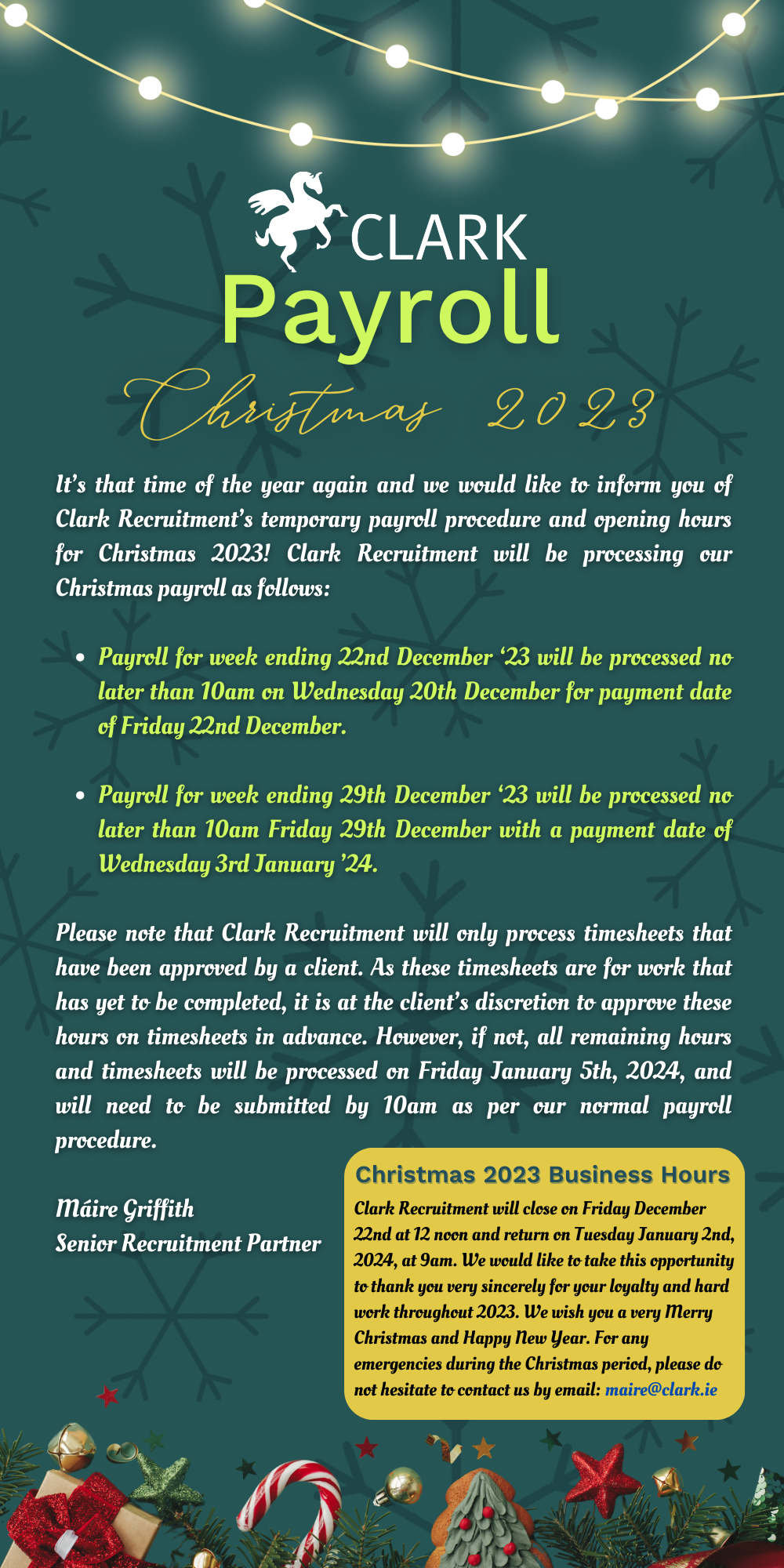Reinvent Your Career: Navigating a New Path
Life is a journey filled with twists and turns, and your career is no exception. If you’ve spent many years in one job or industry and now find yourself no longer employed, it can feel like a daunting challenge to reinvent your career. However, this is an opportunity for growth, and the pursuit of new passions. In this blog, we explore practical advice for jobseekers embarking on the journey of reinventing their careers after dedicating themselves to one job or industry for an extended period. We’ll also consider how your past experience can be a valuable asset as you reinvent your career.
Part I: Embrace Change and Stay Positive
Accept the Shift with Open Arms
- Mindset Shift: Acknowledge that change is a natural part of life, and your career is a dynamic journey. Approach it with curiosity and a growth mindset.
- Why: A positive attitude towards change can reduce anxiety and open doors to new possibilities.
Reflect on Your Achievements
- Accomplishment Review: Take a moment to reflect on your accomplishments and the skills you’ve developed during your years of dedication.
- Why: Recognizing your achievements can boost your confidence and motivate you to apply your skills in a new context.
Focus on What Excites You
- Passion Pursuit: Identify what truly excites you and where you see yourself thriving in your next career. Your passion can be a powerful driving force.
- Why: Pursuing your passion can lead to a more fulfilling and satisfying career.
Part II: Leveraging Your Past Experience
Identify Transferable Skills
- Skill Recognition: Recognize the skills you’ve gained in your previous career. These skills are often transferable to different industries or roles.
- Why: Transferable skills can bridge the gap between your past experience and your new career.
Reframe Your Achievements
- Accomplishment Repurposing: Revisit your accomplishments and reframe them in a way that showcases how they can benefit your new career.
- Why: Presenting your achievements in a new light can make them relevant to your new path.
Seek Mentorship and Guidance
- Mentor Connection: Connect with individuals who have successfully transitioned from one career to another. They can provide invaluable guidance and inspiration.
- Why: Mentorship can offer insights, a support system, and a sense of direction during your career transition.
Embrace Lifelong Learning
- Education and Skill Development: Be open to acquiring new knowledge and skills to complement your existing expertise.
- Why: Continuous learning is a key element of adapting to new careers and staying relevant.
Part III: Practical Steps to Reinvent Your Career
Network and Expand Your Connections
- Networking Efforts: Reconnect with former colleagues, attend industry events, and engage in online networking. New opportunities often arise through your network.
- Why: Networking can open doors to potential job offers and valuable connections in your new field.
Craft a Compelling Resume and Cover Letter
- Resume and Cover Letter Revamp: Tailor your documents to emphasize your transferable skills, passion for your new field, and willingness to learn.
- Why: A well-crafted resume and cover letter can make a strong first impression on potential employers.
Practice Interviewing Skills
- Interview Preparation: Prepare for interviews by practicing responses to common questions. Highlight your transferable skills and enthusiasm for your new career.
- Why: Interview preparation increases your chances of success and helps you communicate your value effectively.
Consider Internships and Entry-Level Positions
- Entry Points: Be open to starting your new career with internships or entry-level positions. They can serve as stepping stones to more advanced roles.
- Why: These roles provide practical experience and help you gain credibility in your new field.
Part IV: Adapting to the New Career Landscape
Embrace Change as an Opportunity
- Adaptability: Embrace the notion that change can lead to new opportunities and personal growth.
- Why: A positive attitude towards change can make you more resilient and open to new experiences.
Set Realistic Expectations
- Expectation Management: Understand that your transition might involve some challenges. Set realistic expectations for your progress.
- Why: Realistic expectations can reduce frustration and help you persevere.
Seek Support and Encouragement
- Personal Support: Lean on friends, family, or support groups to share your experiences and seek emotional encouragement.
- Why: Having a support system can help you navigate the emotional aspects of a career transition.
Monitor Your Progress and Adjust
- Progress Tracking: Regularly assess your progress and make adjustments as needed. Be willing to pivot when necessary.
- Why: Monitoring your journey ensures you stay on track and aligned with your goals.
Deciding to reinvent your career after dedicating years to one job or industry is a significant change that may feel intimidating, but it’s also an opportunity for personal growth, self-discovery, and pursuing your passions. By embracing change with a positive mindset, leveraging your past experience, and taking practical steps toward your new career, you can successfully transition into a new and fulfilling chapter of your professional life.
Remember that your past experience is an asset, not a limitation. It’s the unique blend of skills and knowledge you bring from your previous career that can set you apart in your new one. Embrace the journey, stay resilient, and keep your focus on a brighter and more fulfilling future. Your career is a story waiting to be rewritten, and you have the power to shape it into a narrative that aligns with your aspirations and ambitions.
Job Seekers can register their cv for future opportunities, or visit our website to search & apply for open roles. For more information on career journey management, contact us or call our team on 045 881 888 or careers@clark.ie.
6 Strategies for Personal Branding on LinkedIn
In the competitive landscape of job hunting, personal branding has become a game-changer. It’s not just for celebrities and influencers; it’s a vital tool for professionals looking to stand out in the job market. And when it comes to personal branding in the professional realm, LinkedIn is your best ally. In this thought leadership blog, we will delve into what personal branding is, why it’s crucial for job seekers, and six powerful ways LinkedIn can assist you in crafting a compelling personal brand.
Part I: Understanding Personal Branding
Defining Personal Branding
Personal branding is the deliberate process of shaping and managing the way you present yourself to the world. It’s about creating a consistent, authentic image that reflects your values, expertise, and unique qualities. Think of it as your professional identity that sets you apart in the job market.
Why Personal Branding Matters for Job Seekers
- Distinguishing Yourself: In a sea of job applicants, a strong personal brand helps you stand out. Employers want to know who you are beyond your resume.
- Showcasing Expertise: A well-crafted personal brand communicates your knowledge and skills effectively, making it easier for potential employers to see what you bring to the table.
- Networking and Opportunities: Personal branding amplifies your network and attracts opportunities. Employers are more likely to reach out to candidates with a strong online presence.
- Confidence and Clarity: Knowing your personal brand gives you confidence and clarity in interviews, as you can confidently discuss your values, strengths, and experiences.
Part II: Leveraging LinkedIn for Personal Branding
LinkedIn, the world’s largest professional network, offers numerous tools and features that can significantly enhance your personal brand.
Optimize Your Profile for Impact
- Professional Photo: Start with a high-quality, professional photo. It’s often the first thing people notice on your profile.
- Compelling Headline: Craft a clear and engaging headline that highlights your expertise and industry focus.
- Keyword-Rich Summary: Write a summary that includes keywords relevant to your industry. This helps you appear in more searches.
- Detailed Experience: Add detailed descriptions of your work experience, focusing on accomplishments, not just job duties.
- Recommendations: Request recommendations from colleagues, managers, or mentors. These add credibility to your profile.
Content Creation and Sharing
- Thought Leadership: Share articles, insights, and thoughts about your industry. Position yourself as a thought leader by contributing valuable content.
- Engage with Others: Comment on and share posts from your network. Engaging with others’ content showcases your interest in the industry.
- Create and Share Multimedia: Videos, infographics, and slideshows can make your profile more engaging and demonstrate your expertise.
Building a Strong Network
- Quality Connections: Focus on building meaningful connections with professionals in your industry, not just amassing numbers.
- Join and Participate in Groups: Find and engage in LinkedIn groups related to your field. This expands your network and shows your interest in industry topics.
- Message Thoughtfully: When connecting with someone, personalize your message. Explain why you’re connecting and how you can potentially collaborate.
Showcasing Achievements
- Projects and Publications: Utilize the “Projects” and “Publications” sections to showcase your work and any articles or books you’ve contributed to.
- Certifications and Courses: Add certifications and courses to demonstrate your commitment to professional development.
Consistent Branding
- Brand Voice: Develop a consistent tone and voice for your content. Whether it’s informative, professional, or casual, your brand voice should be consistent across your LinkedIn activities.
- Profile Consistency: Ensure your LinkedIn profile mirrors your resume. Consistency in work history and accomplishments is essential.
Networking and Outreach
- Connect with Recruiters: Connect with recruiters from companies you’re interested in. This can put you on their radar when relevant opportunities arise.
- Direct Messaging: Use LinkedIn’s messaging feature to initiate conversations with professionals you’d like to connect with, whether for informational interviews or networking.
- InMail: If you have a Premium LinkedIn account, you can use InMail to reach out to professionals outside your network.
Part III: Measuring the Impact
A key advantage of LinkedIn is the ability to track the impact of your personal branding efforts. Monitor the following metrics to evaluate the success of your brand-building:
- Profile Views: An increase in profile views indicates that more people are interested in your professional identity.
- Engagement: Analyze the number of likes, comments, and shares on your posts and articles. Higher engagement shows your content is resonating.
- Connection Requests: A rise in connection requests from relevant professionals signifies that your personal brand is attracting a more targeted network.
- Inbound Messages: A higher number of messages from recruiters or peers indicates that your brand is gaining visibility and credibility.
- Job Offers and Opportunities: Ultimately, the success of your personal brand on LinkedIn can be gauged by the number of job offers and career opportunities that come your way.
Personal branding on LinkedIn isn’t just about showcasing your resume; it’s about sharing your professional story, insights, and expertise with the world. When job seekers leverage LinkedIn effectively, they can create a personal brand that sets them apart in the job market, attracts opportunities, and strengthens their professional network. By consistently optimizing your LinkedIn profile, engaging with relevant content, and connecting with professionals, you’ll be well on your way to making a lasting impression and advancing your career in today’s digital job landscape.
Job Seekers can register their cv for future opportunities, or visit our website to search & apply for open roles. For more information on career journey management, contact us or call our team on 045 881 888 or careers@clark.ie.
Key Considerations for 2024 Workforce Planning
The world of work is evolving at an unprecedented pace. As we approach 2024, organizations need to be more agile and forward-thinking than ever before to thrive in a constantly changing business landscape. To do so, planning your workforce strategy and aligning recruitment efforts with it is paramount. In this blog, we’ll explore six considerations for successful workforce planning, complementing it with effective recruitment practices.
Business Strategy Alignment
Your workforce plan or strategy should be linked to your organization’s overarching business strategy. The first step is to understand your company’s short-term and long-term goals, as well as its values and vision. Here’s how to align your workforce strategy with your business objectives:
- Close Collaboration: Foster collaboration between HR and top-level executives to ensure the workforce strategy is fully integrated into the company’s strategic planning.
- Skill Requirements: Identify the specific skills and competencies your business needs to reach its goals. This will guide your recruitment efforts and help you pinpoint where to invest in workforce development.
- Flexibility: Build a strategy that can adapt as business priorities evolve. In a dynamic environment, being able to pivot your workforce strategy is essential.
Technological Integration
As technology continues to reshape the workplace, staying current with the latest tools and trends is vital. Your workforce planning strategy should consider how technology can enhance both your operations and recruitment efforts:
- AI and Automation: Leverage AI and automation to streamline recruitment processes, such as resume screening, candidate matching, and initial interviews. This not only saves time but also improves candidate experience.
- Data Analytics: Use data analytics to make informed decisions. Analyzing recruitment data can help you identify patterns, optimize your hiring process, and forecast future staffing needs.
- Digital Platforms: Invest in modern recruitment platforms that support virtual interviews, remote work management, and candidate assessments. These platforms can enhance your ability to attract top talent, especially in a competitive job market.
Workforce Diversity and Inclusion
Diversity and inclusion are not just buzzwords; they’re critical components of successful 2024 workforce planning. Fostering a diverse and inclusive workplace can lead to improved innovation, employee satisfaction, and overall performance. Here’s how to ensure diversity and inclusion are integrated into your recruitment efforts:
- Bias Mitigation: Implement training and processes to reduce unconscious bias in recruitment. This might include blind resume screening and structured interviews.
- Diverse Sourcing: Expand your talent pool by exploring diverse sourcing channels, including partnerships with community organizations, job fairs, and diverse job boards.
- Employee Resource Groups: Encourage the formation of employee resource groups (ERGs) to support underrepresented communities within your organization and provide valuable insights.
Adapting to Remote and Hybrid Work Models
The workplace of 2024 will likely see a continuation of remote and hybrid work models. As such, your workforce strategy and recruitment practices should reflect these changes:
- Remote Recruitment: Develop processes that allow for remote recruitment and onboarding. Familiarize yourself with virtual assessment tools, conduct effective video interviews, and create remote-friendly onboarding experiences.
- Flexible Policies: Establish flexible work policies that accommodate various work arrangements. This not only makes your company more appealing but also helps you attract talent from a broader geographic area.
- Technology Integration: Ensure that your workforce is equipped with the necessary technology and infrastructure to support remote or hybrid work arrangements.
Skill Development and Upskilling
The skills required in the job market are evolving rapidly. To meet this challenge, your 2024 workforce strategy should emphasize skill development and upskilling:
- Skills Assessment: Regularly assess the skills of your current workforce and identify gaps. Consider deploying skill assessments for new recruits to match them with appropriate training programs.
- Learning and Development: Invest in learning and development programs for employees. This not only aids retention but also prepares your workforce for the evolving demands of your industry.
- External Partnerships: Collaborate with educational institutions and online learning platforms to access cutting-edge training and development opportunities for your workforce.
Recruitment and Retention Strategies
While your workforce strategy is essential for the long-term health of your organization, your recruitment and retention strategies are the immediate means to execute it. Here’s how to ensure your recruitment practices complement your workforce strategy:
- Employer Branding: Develop a strong employer brand that reflects your company’s values, culture, and commitment to employee growth and diversity. A compelling employer brand can attract top talent.
- Talent Pipelines: Build and maintain talent pipelines to streamline your recruitment process. This includes networking, nurturing relationships with potential candidates, and fostering relationships with educational institutions.
- Candidate Experience: Prioritize a positive candidate experience. The way candidates are treated during the recruitment process can influence their perception of your company and impact your ability to attract and retain talent.
- Retention Programs: Beyond recruitment, focus on employee retention. Develop initiatives like career development programs, competitive compensation packages, and mentorship opportunities to keep your workforce engaged.
As we approach 2024, it’s clear that the workforce landscape is shifting dramatically. To remain competitive and adaptable, organizations must carefully plan their workforce strategy and recruitment efforts. Aligning your workforce strategy with your business objectives, integrating technology, promoting diversity and inclusion, adapting to remote work models, investing in skill development, and refining your recruitment and retention practices are essential for success.
By embracing these key considerations, you can position your organization as an employer of choice and ensure you have the talent and capabilities to tackle the challenges and opportunities that lie ahead in 2024 and beyond. As a recruitment expert, it’s crucial to be at the forefront of these trends and strategies to guide your organization to success in the ever-evolving world of work.
For more insights or Information about our services, contact us or call our recruitment experts today on 045 881 888.
The Ideal Job Candidate: An Employer’s Perspective
Job hunting can be a challenging and competitive process. Candidates often wonder what qualities make them an ideal job candidate in the eyes of employers. In this blog, we’ll explore the essential qualities that employers value in job-seeking candidates. Understanding these qualities and the reasons behind their significance will help you position yourself as an ideal candidate in the job market.
Part I: The Quest for an Ideal Candidate
Relevant Skills and Qualifications
Skills Match: Employers look for candidates whose skills and qualifications align with the requirements of the job. A match in technical expertise, certifications, or educational background is crucial.
Why: Hiring a candidate with relevant skills and qualifications ensures that they can quickly contribute to the organization’s success without extensive training or onboarding.
Adaptability and Learning Agility
Adaptation: Employers appreciate candidates who can adapt to changing circumstances and are open to learning. In today’s fast-paced world, industries and job requirements evolve rapidly.
Why: An adaptable candidate can navigate challenges, stay relevant, and help the company grow in a dynamic environment.
Effective Communication
Communication Skills: Candidates who communicate clearly, both in written and verbal forms, are highly sought after certainly. Effective communication fosters collaboration and minimizes misunderstandings.
Why: Strong communicators can convey ideas, collaborate with colleagues, and represent the company professionally to clients and stakeholders.
Problem-Solving and Critical Thinking
Problem-Solving Ability: Employers value candidates who can analyze complex situations, think critically, and propose effective solutions.
Why: Problem solvers help the company address challenges and seize opportunities, contributing to overall efficiency and innovation.
Team Player and Collaboration
Collaborative Mindset: Organizations thrive on teamwork. Employers look for candidates who can work well with others, share knowledge, and contribute positively to a collaborative environment.
Why: Team players improve group dynamics and contribute to a harmonious work environment, which enhances productivity and creativity.
Part II: The Ideal Candidate has Soft Skills that Matter
Leadership and Initiative
Leadership Qualities: Candidates who display leadership traits, such as taking initiative, assuming responsibility, and motivating others, are often preferred.
Why: Leaders can drive projects, inspire teams, and contribute to the organization’s growth.
Emotional Intelligence (EQ)
Emotional Awareness: EQ encompasses self-awareness, empathy, and the ability to manage emotions. Candidates with high EQ can navigate workplace dynamics with grace.
Why: High EQ fosters effective relationships, reduces conflicts, and promotes a positive work culture.
Time Management and Organizational Skills
Efficient Management: Employers appreciate candidates who can manage their time and tasks effectively, ensuring they meet deadlines and deliver quality work.
Why: Time management and organizational skills enhance productivity and contribute to the efficient use of resources.
Resilience and Stress Management
Resilience: In today’s demanding workplaces, resilience is a valuable quality. Candidates who handle stress, setbacks, and challenges with composure are highly desirable.
Why: Resilience helps individuals persevere through difficulties and maintain productivity during trying times accordingly.
Professionalism and Integrity
Professional Conduct: Employers seek candidates who exhibit professionalism, honesty, and integrity. These qualities are essential in building trust with colleagues, clients, and stakeholders.
Why: Professionalism and integrity are the foundation of a trustworthy and reputable organization.
Part III: The Ideal Candidate Knows the Significance of Cultural Fit
Alignment with Company Culture
Cultural Fit: Employers highly value candidates who align with the organization’s culture, values, and mission. Cultural fit ensures that a candidate can seamlessly integrate into the company’s environment.
Why: Cultural fit contributes to a harmonious workplace, fosters teamwork, and promotes a shared commitment to the organization’s goals.
Passion for the Role and Industry
Passion and Enthusiasm: Candidates who demonstrate genuine enthusiasm and passion for the role and the industry tend to excel. Passionate employees are more likely to go the extra mile.
Why: Passion fuels motivation and drives individuals to excel in their roles, contributing to the organization’s success.
Part IV: The Ideal Candidate has a Commitment to Growth
Continuous Learning and Development
Learning Orientation: Employers appreciate candidates who show a commitment to continuous learning and professional development. This commitment ensures that employees remain relevant in their roles.
Why: Continuous learners adapt to evolving industries and contribute to the organization’s innovation and competitiveness.
Long-Term Commitment
Commitment: Candidates who express a long-term commitment to the organization demonstrate loyalty and dedication. Employers often prefer candidates who see themselves growing within the company.
Why: Long-term commitment reduces turnover and fosters a stable and motivated workforce.
Part V: The Ideal Candidates displays Effective Presentation
Professional Resume and Cover Letter
Impressive Documentation: Job candidates should present well-organized and professional resumes and cover letters. These documents should effectively communicate their qualifications and suitability for the role.
Why: An impressive resume and cover letter make a positive first impression and increase the likelihood of being considered for an interview.
Interview Preparedness
Interview Skills: Candidates must be well-prepared for interviews. They should research the company, rehearse responses to common interview questions, and demonstrate their enthusiasm for the role.
Why: Interview preparedness showcases a candidate’s seriousness and commitment to the opportunity.
Being an ideal job candidate involves a combination of technical skills, soft skills, cultural fit, and a commitment to growth. Employers value candidates who can contribute effectively to the organization, foster positive work environments, and align with the company’s mission and values. By understanding the qualities employers seek and striving to embody them, job seekers can position themselves as highly desirable candidates in today’s competitive job market.
For more information on job searching and career journey management, Contact Us or reach out to Clark on 045 881888 or hello@clark.ie
Temporary Payroll Information – Christmas 2023
Christmas is coming and we are getting organised. 🎅🎄 See attached some information for our temporary staff regarding payroll over the Christmas period.
If you have any queries in relation to your pay please do not hesitate to reach out to us on 045 881888.

Bouncing Back After Redundancy: Your Guide to Reinvention
Facing redundancy can be a challenging and unsettling experience, but it’s also an opportunity for personal and professional growth. In this thought leadership blog, we will provide valuable advice to workers who have recently been made redundant. We’ll guide you through three critical phases: what to do in the immediate aftermath of being informed of redundancy, how to present yourself and the situation as you start job hunting, and what to do if your usual role or industry doesn’t have many job opportunities.
Part I: The Immediate Aftermath
Receiving the news of redundancy can be emotionally overwhelming. Here’s how to navigate the immediate aftermath:
Take Time to Process
Emotional Space: Give yourself permission to feel the emotions that come with job loss—anger, sadness, confusion. It’s entirely natural to need time to process.
Why: Acknowledging your emotions and allowing yourself to process them is essential for your mental well-being.
Understand the Terms of Redundancy
Clarify the Situation: Seek a clear understanding of the terms and conditions of your redundancy, including severance packages, notice periods, and any other benefits.
Why: Being informed about the legal aspects of your redundancy ensures you are treated fairly.
Lean on Your Support System
Emotional Support: Reach out to friends, family, or a counselor to discuss your feelings and concerns. Share your experience and let others provide emotional support.
Why: A strong support system can help you navigate the emotional challenges and uncertainties of redundancy.
Update Your Financial Plan
Financial Review: Review your financial situation and create a budget to manage your expenses during your job search.
Why: Financial planning can alleviate stress and ensure you remain financially stable during your job transition.
Part II: Job Hunting and Presenting Yourself
As you begin your job search, it’s crucial to present yourself effectively:
Build a Positive Narrative
Storytelling: Develop a narrative about your redundancy that is focused on change and growth. Highlight your achievements and the skills you’ve gained in your previous role.
Why: A positive narrative helps you approach interviews with confidence and positions you as a valuable candidate.
Update Your Resume and Online Presence
Resume Refresh: Tailor your resume to emphasize your transferable skills and accomplishments. Update your LinkedIn profile with your new career goals.
Why: A well-crafted resume and online presence enhance your visibility to potential employers.
Network Actively
Networking Efforts: Leverage your professional network to seek job leads, referrals, and information about potential opportunities.
Why: Networking is a valuable resource for discovering job openings and gaining insights into the job market.
Hone Your Interview Skills
Interview Preparation: Practice your interview skills, focusing on discussing your redundancy confidently and emphasizing your capabilities.
Why: Interview preparation boosts your chances of success and helps you convey your worth to potential employers.
Part III: Exploring New Opportunities
If your previous role or industry doesn’t offer many job opportunities, consider these strategies:
Assess Transferable Skills
Skill Evaluation: Identify skills that are transferable to other industries or roles. Evaluate how these skills can be applied in different contexts.
Why: Transferable skills can bridge the gap between your previous experience and new career opportunities.
Explore New Industries
Industry Research: Investigate industries or sectors that are experiencing growth or are in need of professionals with skills similar to yours.
Why: Exploring new industries can uncover previously unconsidered career paths.
Upskilling and Training
Skill Enhancement: Consider acquiring new skills or certifications that make you more competitive in industries with growing demand.
Why: Lifelong learning is key to adapting to evolving job markets.
Freelancing and Contract Work
Contract Opportunities: Explore freelance or contract work as a transitional step. It can provide income and opportunities to gain experience.
Why: Contract work offers flexibility and experience while you explore new career paths.
Conclusion
Redundancy is undoubtedly a challenging experience, but it also presents an opportunity for personal and professional growth. By taking the steps outlined in this blog, you can navigate the immediate aftermath of redundancy, present yourself effectively during your job search, and explore new career opportunities when your usual role or industry doesn’t provide many options.
Remember that your worth isn’t defined by your job title or industry. Your skills, experience, and resilience are assets that can carry you through transitions and help you find a fulfilling and rewarding career path. Redundancy is a chapter in your career, not the end of the story. Stay focused, adaptable, and positive, and you can embrace the future with confidence and optimism.
For more information on job searching and career journey management, Contact Us or reach out to Clark on 045 881888 or hello@clark.ie
Lead Through Adversity: A Guide for Hiring Managers
In the ever-changing landscape of business, adversity is an inevitable companion. Whether it’s a market downturn, unexpected challenges, or a global crisis, the ability to lead a team through adversity is a hallmark of great hiring managers. In this thought leadership blog, we will explore how hiring managers can motivate and inspire their teams to success in the face of adversity, offering practical advice and real-world examples of how to get involved.
Part I: Recognizing the Impact of Adversity
1. Understanding Adversity’s Effects
Adversity can have a profound impact on your team. It can lead to decreased morale, motivation, and productivity, as well as increased stress and uncertainty. The first step in overcoming adversity is recognizing its effects on your team’s dynamics and performance.
2. Leading by Example
As a hiring manager, your team looks to you for guidance and support. Leading by example involves staying composed and positive in the face of adversity, which can set the tone for your team’s response.
3. Building Resilience
Resilience is the ability to bounce back from setbacks and continue forward. As a hiring manager, you can play a pivotal role in building resilience within your team.
Part II: Strategies to Motivate and Inspire
1. Effective Communication
- Open and Transparent Communication: Keep your team informed about the challenges your organization is facing and the steps being taken to address them. Share both good and bad news.
- Active Listening: Encourage team members to share their concerns and ideas. Actively listen to their feedback and validate their feelings.
- Example: During a challenging economic downturn, a hiring manager regularly scheduled team meetings to discuss the situation openly. They encouraged team members to share their concerns and ideas for cost-saving measures. By actively listening and implementing some of the suggestions, the team felt more involved in the decision-making process.
2. Maintaining a Clear Vision
- Define and Reinforce Goals: In times of adversity, it’s crucial to maintain a clear vision of your team’s goals and priorities. Reinforce these objectives to keep the team focused.
- Celebrate Small Wins: Even in challenging times, celebrating small victories can boost morale and maintain a sense of accomplishment.
- Example: A hiring manager leading a sales team during a challenging market phase continued to emphasize the long-term vision of the company’s success. They celebrated each deal closed and recognized team members for their resilience and dedication.
3. Empower and Trust Your Team
- Delegate Responsibility: Empower team members by delegating tasks and responsibilities that align with their strengths and expertise.
- Trust and Autonomy: Provide your team with the autonomy to make decisions and take ownership of their work.
- Example: During a period of downsizing, a hiring manager entrusted team members to take on additional responsibilities, make decisions about their workflow, and collaborate on solutions for maintaining performance. This approach enhanced their sense of ownership and accountability.
4. Show Empathy and Support
- Acknowledge Personal Struggles: Be empathetic and understanding of the personal challenges your team may be facing during adverse times.
- Offer Support: Provide resources for emotional support and mental health, such as access to counseling services or flexible work arrangements.
- Example: A hiring manager leading a remote team during a global crisis showed empathy by allowing flexible work hours to accommodate team members’ family needs. They also arranged virtual wellness sessions to support their team’s emotional well-being.
5. Continuous Learning and Adaptation
- Foster a Learning Culture: Encourage your team to embrace change and view adversity as an opportunity for growth.
- Adapt to New Strategies: In response to adversity, adapt your team’s strategies and processes to meet changing demands.
- Example: In a highly competitive industry, a hiring manager realized that their team needed to adapt to new technologies and trends. They invested in training programs, encouraged team members to pursue certifications, and recognized their efforts to stay ahead in the market.
6. Celebrate Resilience and Perseverance
- Recognition and Appreciation: Acknowledge and celebrate your team’s resilience and perseverance in the face of adversity. Highlight their individual and collective efforts.
- Showcase Success Stories: Share success stories of team members who have overcome challenges and adversity.
- Example: A hiring manager regularly recognized team members who demonstrated resilience and perseverance. They shared stories of team members who had faced personal or professional adversity and came out stronger, inspiring the team.
Part III: Leading Through Adversity with Empathy and Involvement
1. One-on-One Support
- •Regular Check-Ins: Schedule one-on-one check-ins with team members to discuss their well-being and offer support.• Personal Development Plans: Collaborate with team members to create personal development plans that address their goals and challenges.
- Example: During a challenging project, a hiring manager noticed that a team member was struggling with their workload. They scheduled a one-on-one meeting to understand the challenges and adjusted the workload accordingly, ensuring the team member’s well-being.
2. Participate in Problem-Solving
- Collaborative Approach: Engage with your team in problem-solving sessions. Encourage them to share their insights and suggestions for overcoming adversity.
- Active Participation: Show your team that you are actively involved in finding solutions and are committed to their success.
- Example: When a project faced unforeseen obstacles, a hiring manager convened a team meeting to brainstorm solutions. They actively participated in the discussion, implementing some of the team’s suggestions and demonstrating their commitment to solving challenges together.
3. Lead by Example
- Stay Calm Under Pressure: Demonstrate composure and resilience in your own work and interactions. Show your team that you remain steady in the face of adversity.
- Share Your Experiences: Open up about your own experiences with adversity and how you’ve navigated challenges. Offer insights and guidance based on your own journey.
- Example: When the organization faced a sudden crisis, a hiring manager remained calm and collected during team meetings. They openly shared their own experiences with overcoming adversity, offering reassurance and guidance to the team.
4. Empower Decision-Making
- Delegate Decision Authority: Allow team members to make important decisions within their areas of expertise. Empower them to take ownership of solutions.
- Guidance and Trust: Provide guidance and support while trusting your team to make informed decisions.
- Example: During a restructuring phase, a hiring manager empowered team leaders to make decisions regarding their teams’ structure and workflow. They provided guidance and support while trusting the team leaders to make the best decisions for their departments.
Conclusion
Leading through adversity requires a combination of effective strategies and active involvement as a hiring manager. By understanding the impact of adversity, employing motivational strategies, and demonstrating empathy and involvement, you can inspire your team to overcome challenges and achieve success even in the face of adversity. Your role as a supportive and motivating leader can make a significant difference in how your team navigates and thrives in challenging times.
For more insights OR Information about our services, contact us or reach out to our team of recruitment experts today on 045 881 888.
Navigating the Job Market in 2023: Top Strategies for Successful Job Searching
In 2023, the job market has evolved significantly due to advancements in technology and changes in the global economy. Job seekers need to adapt their strategies to stand out and secure the best opportunities. This article explores the best methods of searching for a job as we approach 2024, covering traditional and innovative approaches to help individuals find their dream job.
Optimise Your Online Presence
In the digital age, having a strong online presence is crucial for job seekers. Employers often search for candidates on social media platforms and professional networking sites like LinkedIn. Ensure your social media profiles are professional, and consider showcasing your skills and accomplishments in a portfolio website or a personal blog. Participate in relevant online communities and engage in industry discussions to demonstrate your expertise and passion.
Leverage Artificial Intelligence and Job Matching Platforms
As technology continues to shape the job market, Artificial Intelligence (AI) and machine learning play increasingly significant roles in matching job seekers with suitable opportunities. AI-powered job platforms analyse candidates’ skills, experience, and preferences, connecting them with the most compatible job openings. Be proactive in using these platforms to maximise your chances of landing interviews with companies looking for candidates like you.
Networking Remains Key
Networking has always been an essential part of job searching, and it remains crucial in 2023. Attend industry events, job fairs, and professional conferences both in person and virtually. Build and nurture relationships with professionals in your field, as referrals often carry significant weight in the hiring process. Stay in touch with former colleagues and mentors, and consider joining industry-specific online communities to expand your network.
Embrace Remote and Gig Opportunities
The job landscape has shifted dramatically towards remote and gig work in recent years, and this trend is expected to continue late into 2023 and beyond. Embrace the flexibility and advantages of remote work, and consider freelancing or gig opportunities to gain experience and build your portfolio. Many companies now actively recruit remote workers, enabling you to access a broader range of job opportunities regardless of your location.
Focus on Continuous Learning
In today’s fast-paced world, the demand for certain skills changes rapidly. Stay ahead by investing in continuous learning and professional development. Enroll in online courses, attend workshops, or pursue certifications that align with your career goals. Demonstrating a commitment to learning and staying current in your industry will make you a more attractive candidate to potential employers.
Tailor Your Applications
Sending out generic job applications may not yield the desired results. Instead, tailor your CV and cover letter to each position you apply for. Highlight specific skills and experiences that match the requirements of the job posting. Use keywords related to the industry and the role to increase the chances of getting past applicant tracking systems (ATS) that companies often use to screen candidates.
Consider Company Culture
Company culture has become a major factor for job seekers in recent years. Research and evaluate the work environment, values, and employee satisfaction of the companies you apply to. A positive company culture can significantly impact your job satisfaction and overall career growth.
Job searching now requires a multifaceted approach that combines traditional methods with cutting-edge strategies. By optimising your online presence, leveraging AI-powered platforms, networking actively, embracing remote opportunities, focusing on continuous learning, tailoring your applications, and considering company culture, you can enhance your chances of finding the perfect job. Remember, perseverance and adaptability are key to navigating the dynamic job market and securing a rewarding career path. Good luck!
For more information on job searching and career journey management, Contact Us or reach out to Clark on 045 881888 or hello@clark.ie
6 Common Hiring Mistakes and How to Avoid Them!
Hiring mistakes can be a costly affair for your company. A poor hiring decision not only affects morale and productivity but can also harm your reputation. The expenses escalate if you find yourself needing to restart the recruitment process after parting ways with an unsuitable candidate.
To guide you in steering clear of such pitfalls, Stephen Farrell-O’Callaghan highlights six errors to avoid in the employee recruitment process.
Mistake No. 1
Losing sight of your business strategy.
Frequently, business owners prioritize filling positions urgently. However, irrespective of the urgency, it’s crucial to pause and consider your strategic plan. How does the new employee align with your company’s competitive advantage and growth plans? What essential skills are you lacking?
Reflecting on your competitive positioning and proactively seeking talent aligned with your vision is vital, advises Stephen, who counsels companies on overcoming recruitment challenges. You can also refer to our article on ‘How to write Effective Job Descriptions‘ for more guidance.
Mistake No. 2
Failing to see recruiting as a marketing challenge.
In a near full-employment scenario, skilled job seekers have numerous options. They scrutinize potential employers as closely as employers scrutinize them.
Presenting your best image begins with your website. Enhance your overall branding and create a recruitment page that outlines your employer value proposition—clarifying what your company represents and offers employees.
“It’s insufficient to simply post job openings; you need to articulate what it means to work here,” emphasizes Stephen. “Highlight the benefits, promote the values, and share real success stories of team members.”
Mistake No. 3
Passively waiting for candidates to apply.
While posting positions on job sites and social media is essential, actively seeking out strong candidates is equally vital. Explore promising profiles on LinkedIn, and identify top performers from competitors, suppliers, and customers. Encourage employee referrals by offering bonuses for successful hires lasting six months.
Mistake No. 4
Ignoring groups of potential employees.
Despite intense competition for skilled labour, many employers overlook significant pools of potential candidates. Immigrants, Indigenous workers, those requiring visa/permit assistance, and the disabled workforce all present valuable opportunities for employers.
Mistake No. 5
Taking a haphazard approach to the selection process.
After assembling a candidate pool, a systematic approach to reviewing and deciding is crucial. Relying on intuition alone can lead to suboptimal decisions. Adopt a consistent process for all candidates—uniform criteria for CV review, skills tests, and interview questions. Utilize a simple evaluation grid to score applicants at each stage.
“Comparing apples to apples is key,” notes Stephen. “Ensure every candidate undergoes the same experience to discern their differences.”
Mistake No. 6
Asking bad interview questions
Beyond legally inappropriate questions, steer clear of what Stephen calls “chit-chat questions.” These unfocused queries don’t aid in differentiating candidates and might deter talented individuals. Instead, focus on work-related questions that delve into experiences and scenarios, helping identify candidates suited for your workplace.
Invest time in crafting effective interview questions and maintain a standardized list. The efforts in refining recruitment strategies will yield long-term benefits and avoid hiring mistakes.
For more insights into solutions provided by Clark, contact us or reach out to our team of recruitment experts today on 045 881 888.
Have you considered Recruitment Process Outsourcing (RPO) as a hiring method?
At Clark, we take on all parts of your recruitment function or supplement internal teams. We help your business secure the talent you need to drive business growth using a high-touch, agile, and configurable approach during every step of the recruitment process. We help your business accelerate hiring because of the work planning strategies we put in place. We help strengthen the employers brand to attract the key talent necessary for the future success of your business.
We use innovative technology and techniques, alongside experienced and talented HR and recruitment professionals who bring leading-edge best practices to your people function, delivering immediate access to talent. We understand the complex nature of organisations and the need to scale up or down recruitment activities as required. Our agility allows us to respond to market shifts and adjust to flexible working strategies.
We are trusted partners to your organisation, and we essentially act as an extension to your HR function – meaning we align ourselves to your overall business objectives. We provide weekly analytical reporting, so you have immediate visibility to what is happening indicating key statistics, sharing metrics on diversity, equity, and inclusion, optimizing hiring processes and leveraging technology to reduce bias.
We provide a best-in-class candidate experience and take a multifaceted approach to managing the journey of every candidate by focusing on communication, turnaround times, and feedback. We aim to deliver a flawless service at every touch point of the recruitment cycle. We help a business manage recruitment costs as our service offers value beyond what internal acquisition teams have the budget to do and our solution is a key cost saving on long-term investments of contract or permanent resources.
We promote your brand at all times and promote you as an employer of choice representing your business and active positions with intelligent, impactful, and professional recruitment marketing. We are flexible and provide an ‘a la carte’ service meaning we can customise our service to meet your exact needs reducing costs while still delivering a service that allows you to focus on other key objectives.
Our world of work has changed, and we are abreast of all developments and experts in our field meaning you have immediate access to salary guides, salary benchmarking and so much more. The world of work is small, and our reach is global, we assist you with managing multidimensional recruitment strategies. We are well versed and experienced in managing recruitment solutions and administration and guidance on work permits and visas.
We work with your Hiring Managers and provide onsite workshops to ensure quality is incorporated into every step of the recruitment process. We are highly experienced vendor managers and have agreed partnerships with expert recruiters in key specialist areas meaning we exhaust the marketplace for the best talent.
Clark is a multi-award-winning leader in talent solutions operating as a strategic partner leading business solutions through people. Clark provides a full suite of configurable talent services including recruitment process outsourcing (RPO), permanent, contract, interim, and temporary recruitment, coaching, psychometric, and aptitude assessments.
| For more information on RPO solutions and other hiring methods contact us or reach out to our RPO team now, Stephen Farrell-O’Callaghan or Noreen Sweeney on 045 881888. |  |
















